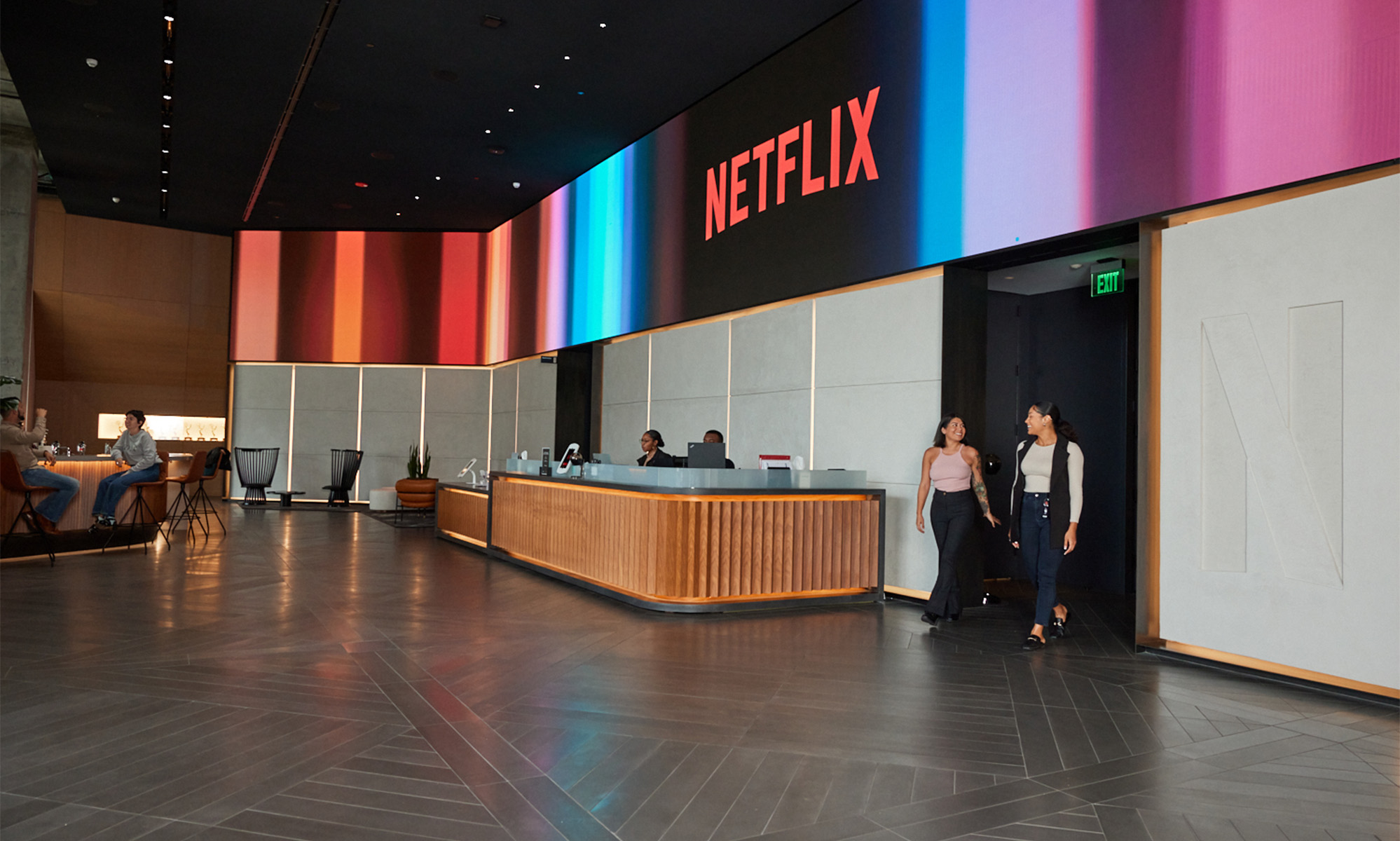The past 18 months have been a roller-coaster ride for Netflix (NFLX 0.56%) investors. After topping all-time highs in mid-2018, slowing growth in its domestic market and an onslaught of new competition has hung over the streaming pioneer, pushing its stock down nearly 30% from last year's highs.
Netflix has been on fire over the past week, however, as investors have become increasingly optimistic about the company's growth prospects, even in the face of the growing competition. The stock has gained more than 11% over the previous five trading sessions, as investors digested a number of positive developments that show that while challenges remain, the sky isn't falling on Netflix.
Here are three things that have investors in the streaming giant increasingly bullish for the future.

Image source: Netflix.
1. International growth is strong
In a regulatory filing earlier this week, Netflix released nearly three years' worth of data on streaming revenue, memberships, and average revenue per user (ARPU) for its major geographic regions worldwide and how each area is performing. The positive results gave Netflix a much-needed shot in the arm, showing that while growth is slowing in the U.S. and Canada -- the company's oldest markets -- Netflix is generating solid growth in international locales. The company plans to start releasing this additional data on a regular basis going forward.
Netflix added just 2.4 million subscribers in the U.S. and Canada during the first nine months of 2019, bringing the total to 67.1 million. At the same time, however, Europe, the Middle East, and Africa (EMEA) added 9.5 million, growing to 47.4 million customers. Latin America, another of the company's early territories, added 3.3 million subscribers, bringing the total to 29.4 million. The Asia Pacific (APAC) region rounded out the four, increasing its customer count by 3.9 million, now totaling 14.5 million. This shows that each of Netflix's international regions is adding subscribers at a faster rate than its nearly saturated U.S. market.
Pivotal Research analyst Jeffrey Wlodarczak increased Netflix's price target to $425 from $400, saying the "more in-depth disclosure" gave him greater confidence in the company's growth prospects. The analyst is forecasting 600,000 new U.S. customers in the coming quarter along with 8 million international subscribers. That's not all: He expects Netflix to add a whopping 27 million overseas accounts in 2020, and another 2 million here at home.
Goldman Sachs analyst Heath Terry was similarly bullish, noting that the markets with the highest ARPU were also the areas with the most significant growth, giving Netflix a clear runway for greater penetration moving forward.

Image source: Disney.
2. The threat from Disney may be overestimated
Netflix investors have been concerned that Disney's (DIS 0.18%) rival streaming service -- Disney+ -- which debuted last month, would not only eat into Netflix's future growth but potentially steal away large swaths of the streaming current customers. Disney+ announced 10 million subscribers after its first day of operations. While the company hasn't provided any updates, third-party tracking services have reported that the Disney+ app has been downloaded more than 22 million times in the four weeks since the service launched, which supports the conclusion that Disney sign-ups may have doubled in less than a month.
Bank of America analyst Nat Schindler sought to address the question, surveying more than 1,000 U.S. consumers after the launch of Disney+. The biggest takeaway from the study is that 65% of respondents said they don't consider Disney+ as a substitute for Netflix, but rather a complementary offering, downplaying the threat from the House of Mouse. Additionally, the number of U.S. subscribers who said they plan to cancel Netflix dropped from 5% in October to 4% now, which the analyst considers normal churn, showing that competition may not be as costly as originally feared.
3. Netflix is baring its FAANGs
Bank of America analyst Nat Schindler went on to name Netflix as the investment bank's top FAANG stock of 2020. The FAANG acronym refers to Facebook (FB +0.86%), Amazon (AMZN +0.54%), Apple (AAPL 0.73%), Netflix, and Google -- now Alphabet (GOOGL 1.07%) (GOOG 0.94%).
Of the aforementioned technology stocks, Schindler sees Netflix as the company with the clearest avenue for growth, while also having the lowest degree of regulatory risk of any of the FAANG stocks. Earlier this year, reports emerged that U.S. antitrust regulators, including the Federal Trade Commission (FTC) and the Department of Justice (DOJ), were planning to launch investigations into each of the largest U.S. technology companies, though Netflix wasn't included on the list of probes. Facebook has already been fined $5 billion for the Cambridge Analytica scandal, while Google and YouTube were recently hit with a $170 million fine for failing to protect children's privacy. A judge also recently let continue an antitrust lawsuit against Apple for the 30% fee it charges developers to sell their wares through its App Store.
Schindler also cited what he called a "perfect storm" for Netflix this year. The combination of fear regarding the competition and the recent price increase slowed subscriber growth and increased churn. History has shown that the majority of subscribers who leave have returned within six to nine months after each major price increase, and that time is quickly approaching. This should provide upside to Netflix's U.S. subscriber numbers over the coming two quarters.












